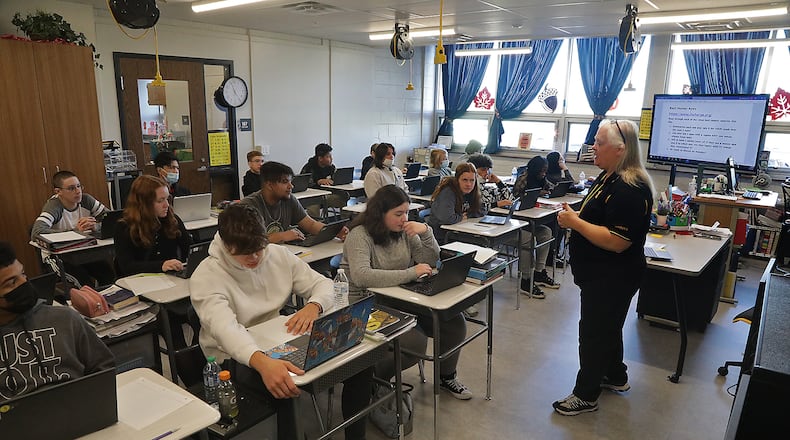Starting next school year, high schools can offer a financial literacy course as either an elective or math course. Students attending chartered non-public schools are exempt from the requirement, unless they attend the school using a state scholarship.
Beginning with the 2024-25 school year, each school must require a teacher to have an educator license validation in financial literacy to provide this instruction, the law states. Costs of obtaining license validation for instructors is to be covered by each individual district, with opportunities for reimbursement from the Ohio Department of Education.
Teachers who hold a valid educator license or endorsement to provide instruction in social studies, family and consumer sciences, or business education are exempt from the requirement to receive a financial literacy license validation to provide this instruction.
According to Clark County Educational Service Center Superintendent Dan Bennett, every district in the county offers financial literacy curriculum, mainly through embedding it in a current course offering.
“Each district embraced the need to include financial literacy in its pathway to graduation. Students benefit from teaching financial literacy for readiness in the world of work and for personal finance,” he said.
Bennett said the “most immediate impact” will be the cost of offering the course through staffing.
The Ohio Department of Education will hash out logistics and give districts guidance and standards for implementing these courses after which each district will work to develop and adopt its own individual curriculum.
Clark-Shawnee Local Schools requires high school students to complete a financial literacy course, according to Superintendent Brian Kuhn.
“Our course covers relevant topics as we prepare our students for success in the future, including units on personal finance, money management and how to plan for financial success,” Kuhn said. “A financial literacy course provides high school students with more than just academic credit. Students will learn essential skills that will impact their lives for years to come.”
The course is typically taken during sophomore year and gives students the chance to learn about the foundations of financial success.
“Every Shawnee High School student is given the opportunity to explore the financial foundations necessary for success well beyond their high school years. We have heard many stories of how our students have shared the knowledge and skills gained from our financial literacy course with their families to have a positive impact at home,” said High School Principal Michelle Heims.
Northeastern and Greenon Local Schools are two other districts that offer financial literacy. Greenon’s graduation requirements include instruction in economics and financial literacy during high school, and several teachers also hosts “Real World. Real Money” for eighth grade students.
“At (Northeastern), we already provide financial literacy in some capacity to our students. We are excited to expand our curriculum and provide our students with more in-depth financial literacy curriculum opportunities,” said Northeastern Assistant Superintendent Shawn Blazer.
The new law also may present staffing challenges, as many districts throughout the state have already had issues filling positions as a result of the COVID-19 pandemic.
“The challenge will be to transition into a full-time classroom teacher given the shortage of staff currently and the dollars needed to get staff certified,” Bennett said.


